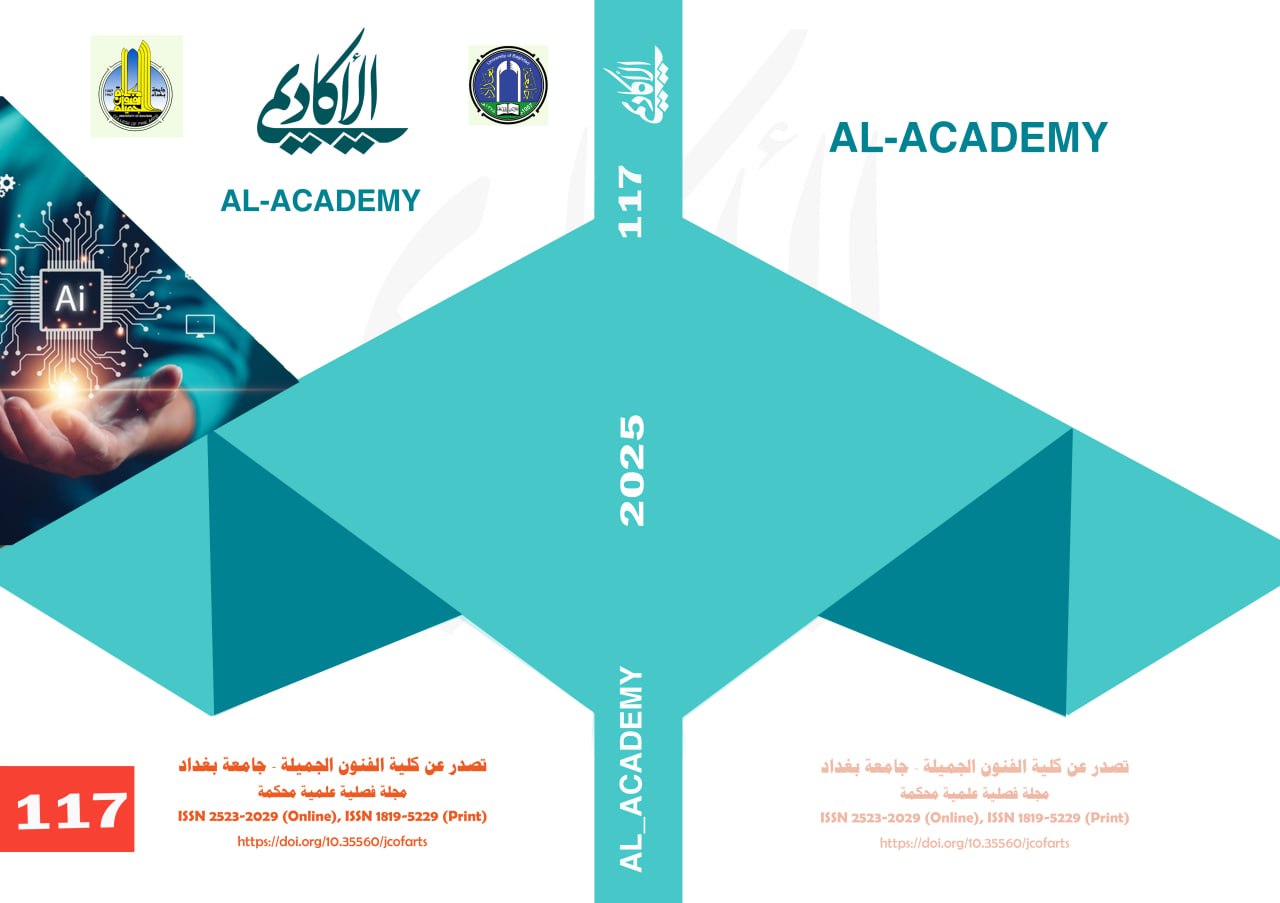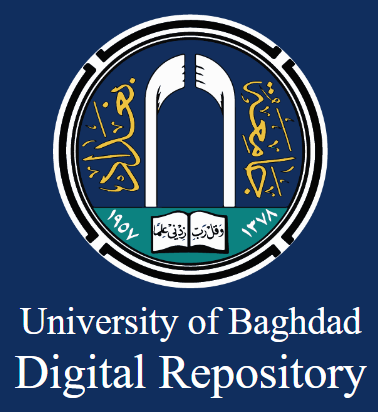Exploring aesthetic and expressive values in cosmology through photography and installation art in space
DOI:
https://doi.org/10.35560/jcofarts1535Keywords:
Aesthetic values, expressive values, cosmology, photography, installation art in spaceAbstract
This study examines the aesthetic and expressive values of cosmology through photography and installation art within the context of contemporary art. Art is an effective means of expression for understanding and appreciating astronomy (cosmology), the science that studies the origin and evolution of the universe. This research also highlights a portion of the artistic creativity embodied in photography during the nineteenth and twentieth centuries. This art form emerged at a time when advanced photographic technologies were not available. Artistic practice began with the goal of bringing art-loving audiences closer to the wonders of the universe and enriching the general understanding of cosmic phenomena, with scientific curiosity and the pursuit of discovery being the primary drivers. During this period, a group of artists emerged who sought to explore the hidden beauty behind the clouds—a beauty many fail to see due to the bright lights of the city. This dazzling celestial beauty appears when viewed from quiet locations far from the hustle and bustle of the city, revealing its grandeur and cosmic secrets. This research also explores the influence of scientific discoveries in shaping artistic vision. The research problem is to understand how aesthetic and expressive values in cosmology influence contemporary artworks. The main question addressed by this paper is: "How does astronomy influence artistic creativity and aesthetic expression in contemporary art?"
This paper aims to explore the impact of artworks on the general understanding of cosmic phenomena and to examine how art can open new horizons for artistic expression and creativity in astronomy (cosmology). The importance of this research lies in achieving a deeper understanding of cosmic concepts by studying the impact of astronomy on artistic vision and creativity, which contributes to enhancing the interaction between science and art and enriching human knowledge in general.
The study relied on a descriptive-analytical approach by reviewing and analyzing a selected group of artworks from a specific group of artists in the fields of photography and installation art during the nineteenth and twentieth centuries. These artists expressed astronomical phenomena using their artistic skills in photography and installation art. These practices enabled them to document minute details that provided a deeper understanding of artistic practices in the field of cosmology.
Through a critical analysis of artworks by a group of contemporary artists inspired by cosmology, the research concluded that art plays a pivotal role in enhancing understanding. The scientific study of the universe and the exploration of aesthetic and expressive values in contemporary art, thus providing a qualitative addition to artistic expression and enriching visual language. Furthermore, the study demonstrated that artworks dealing with cosmological themes are capable of broadening audience horizons and encouraging them to reflect more deeply on scientific and philosophical issues related to the universe. These works contribute to creating a connection between science and art, enhancing public awareness of cosmic issues and encouraging further interest and exploration in the field of astronomy.
References
Abdullah, et al. (2022). Cosmology of the Malay Realm. Research paper. NVEO 9(1): 146-156.
Aghanim, N., Akrami, Y., Ashdown, M., Aumont, J., Baccigalupi, C., Ballardini, M., Banday, A. J., Barreiro, R. B., Bartolo, N., Basak, S., Battye, R., Benabed, K., Bernard, J., Bersanelli, M., Bielewicz, P., Bock, J. J., Bond, J. R., Borrill, J., Bouchet, F. R., . . . Zonca, A. (2020). Planck2018 results. Astronomy and Astrophysics, 641, A6. https://doi.org/10.1051/0004-6361/201833910
Andrews, J. T., & Siddiqi, A. A. (2011). Into the cosmos: Space Exploration and Soviet Culture. University of Pittsburgh Pre. https://doi.org/10.2307/j.ctt6wrcn2
Asimov, I. (1991). Foundation. Bantam.
Asimov, I. (2012). Foundation and earth (Vol. 5). Del Rey.
Bann, S. (2020). Art History and History: Around Francis Haskell and the Rediscovery of French Nineteenth-Century History Painting. In History and Art History (pp. 72-86). Routledge.
Bousso, R. (2012). Vacuum structure and the arrow of time. Physical Review. D. Particles, Fields, Gravitation, and Cosmology/Physical Review. D, Particles, Fields, Gravitation, and Cosmology, 86(12). https://doi.org/10.1103/physrevd.86.123509
Calefato, G. (2013). Aesthetic Experience in Contemporary Art: Between Science and Art. Journal of Visual Culture, 16(2), 85-97.
Collaboration, P., Aghanim, N., Akrami, Y., Ashdown, M., Aumont, J., Baccigalupi, C., & Rosset, C. (2020). Planck 2018 results. VI. Cosmological parameters.
Erney, J. (n.d.). Art and the cosmos. Www.academia.edu. Retrieved May 11, 2024, from https://www.academia.edu/9122361/Art_and_the_cosmos?sm=b
Greenberg, C. (1988). Modernist Painting. In Art and Culture: Critical Essays (pp. 193-201). Beacon Press.
Greenough, F. G. (2005). Progressive density in John Adams' “Harmonielehre”: A systematic analytic approach, with original composition. University of Northern Colorado.
Hall, T. (2007). Artful cities. Geography Compass 1(6), pp. 1376–1392.
Harrison, M. (2017). Art and the Cosmos: An Exploration of Digital Representation in Contemporary Art. Art Journal, 22(1), 55-67.
Hawking, S. (2011). Black holes and baby universes: and other essays. Bantam.
Hawking, S. W., & Ellis, G. F. R. (1973). The Large Scale Structure of Space-Time. Cambridge University Press.
Heisinger, B. (1989). American minimalism in the 1980s. American Music, 7(4), 430. https://doi.org/10.2307/3051914
Hillier, B. (2005). The art of place and the science of space. World Architecture, 185, 96-102.
Höhl, W. (2023). Ambiguity in utopian XR-games: Basic principles for the design of virtual worlds. European Journal of Futures Research, 11(1), 6.
Impey, C. (2018). Visualizing the universe – the intersection of art and astronomy. www.academia.edu. https://www.academia.edu/77119202/Visualizing_the_Universe_the_Intersection_of_Art_and_Astronomy
Koski, R. A., Bothwell, A. L., & Altman, S. (1976). Identification of a ribonuclease P-like activity from human KB cells. Cell, 9(1), 101–116. https://doi.org/10.1016/0092-8674(76)90056-8
Lang, K. (2018). Chaos and Cosmos: On the Image in Aesthetics and Art History. Ithaca: Cornell University Press. https://muse.jhu.edu/book/59873
Lennox, S. (2015). Photographic Interpretation of Cosmic Phenomena. Visual Art Review, 12(4), 34-45.
Logan, E. (2018). Psychological and Social Impact of Cosmic Imagery in Contemporary Art. Journal of Art Psychology, 25(3), 40-52.
Mathews, V. (2010). Aestheticizing space: art, gentrification and the city. Geography Compass, 4(6), 660–675. https://doi.org/10.1111/j.1749-8198.2010.00331.x
Miller, R., Bonestell, C., Durant, F. C., & Schuetz, M. H. (2001). The Art of Chesley Bonestell. United Kingdom: Paper Tiger.
Nolan, C. (2014). Interstellar (Film), Warner Bros.
Papastergiadis, N. (2013). The Color of the Cosmos: John Berger on Art and the Mystery. The Canadian Review of Comparative Literature, 40(4), 353-369. https://journals.library.ualberta.ca/crcl/index.php/crcl/article/view/25736
Papastergiadis, N. (2021). Cosmos and nomos: cosmopolitanism in art and political philosophy. Journal of Aesthetics & Culture, 13(1). https://doi.org/10.1080/20004214.2021.198099
Parrett, A. (2008). Veins of Symbolism and Strata of Meaning [Review of Stanley Kubrick’s 2001: A Space Odyssey: New Essays, by R. Kolker]. Science Fiction Studies, 35(1), 116–120. http://www.jstor.org/stable/25475111
Repphun, E. (2012). Mormon science fiction: tales of interstellar exodus and perfection. In BRILL eBooks (pp. 39–70). https://doi.org/10.1163/9789004226487_004
Ryden, B. (2017). Introduction to Cosmology. Cambridge University Press.
Schneider, P. (1988). Zao Wou-Ki.
Sherin, A. (2020). Digital Art and the Representation of the Cosmos. Journal of Contemporary Art, 18(2), 102-113.
Shaw, K. (2002). Culture, economics and evolution in gentrification. Just Policy: A Journal of Australian Social Policy, (28), 42–50. https://search.informit.org/doi/10.3316/ielapa.200301333
Slater, T. (2004). Municipally managed gentrification in South Parkdale, Toronto. The Canadian Geographer, 48(3), 303–325.
Tanaka, Y., Doser, M., Sakurai, R., Shimoyama, H., & Takahashi, R. (2018). Flowers behind the back of the universe: A cosmic art project exploring the invisible. Acta Astronautica, 146, 435–440. https://doi.org/10.1016/j.actaastro.2018.03.010
Downloads
Published
Issue
Section
License
Copyright (c) 2025 Reem AL-Rujaibi, Salman bin Amer bin Salem Al-Hajri

This work is licensed under a Creative Commons Attribution 4.0 International License.













